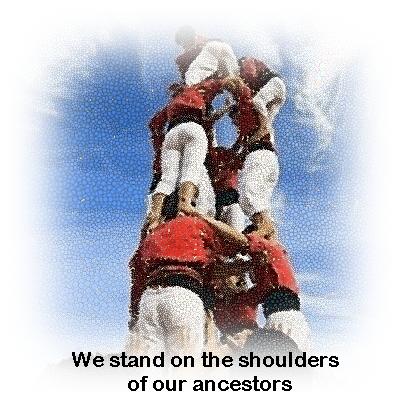Legacy of a Faithful Ancestry
Legacy of a Faithful Ancestry

The Timeliness of the Heidelberg Catechism (Part 1)⤒🔗
A few years ago, a Swiss pastor of Dutch descent asked me whether we still preached from the Heidelberg Catechism in our churches. When I answered in the affirmative, he said, “Hold on to that! Hold on to that for sure!” Curiously, I asked, “Why?” His reaction was, “Because through it the congregation is being built up.” The Heidelberg Catechism — a means for building up the congregation.
To begin with, I want to say something about my personal engagement with the Heidelberg Catechism. When in my first congregation I was called to preach on a weekly basis using the Catechism, I quickly discovered much joy in doing so. Also the reactions from the congregation spurred me on. Ever since, I preach with much pleasure on the Catechism. I was really taken in by it.
For the completion of my doctoral thesis I engaged extensively with the Catechism and the preaching based on it; this intensified my “ties” with the Heidelberger even more.
For me, the Heidelberger is not a museum artifact from a distant past, but more like an old diamond; as you polish it more and more — that is, know it and use it — it shines ever more brightly.
Strength?←⤒🔗
What is it that makes this textbook of the church so special? What gives it such strength? How is it that the Catechism resonates to such an extent in the hearts of the believers? And if many generations of Christians, also because of this confession, were shaped in their lives according to the Scriptures, can the Heidelberger still continue to function today as a teaching manual for the church? And how?
In a series of three articles I intend to dig deeper into these questions. I summarize the strength and timeliness of the Catechism in four aspects.
The Heidelberg Catechism is:←⤒🔗
-
the legacy of a faithful ancestry;
-
a teaching manual for the church, especially for the youth;
-
a confession of the church;
-
a safe anchor for the church and theology in the unrest of the ages.
First then, let’s pay attention to the Heidelberg Catechism as an inheritance of a faithful ancestry.
Origins←⤒🔗
The Heidelberg Catechism did not originate in the lee of a storm that has abated, in a quiet and peaceful situation, but rather in a turbulent age of European history.
The middle of the 16th century experienced great upheavals in many different areas: in politics, in military relations, and in education, but also in areas of church life and theology. Between Reformed and Lutheran, between Reformed and Anabaptists, but also between Protestant and Roman Catholics, the contrasting views loomed large, with all the resulting consequences.
In this era of significant change and stress, the Heidelberg Catechism was published in 1563. Frederick III, the Elector of the Palatinate, who had himself become a Reformed confessor in 1560, had taken the initiative for a catechism a year earlier. In his view there were too many objections to the teaching manuals in use at that time. A new catechism was needed to put an end to this situation, and at the same time it would serve as something to build up the churches of the Palatinate. Right from the start Frederick III envisioned a catechism that would not be a one-man production but rather the result of a concerted reflection of many participants. It is likely that the elector ordered Zacharias Ursinus to prepare a draft of a new catechism. So Ursinus did. Afterward, the concept was discussed by a constituted committee consisting of the theological faculty, the consistory, superintendents (among which was Caspar Olevianus), the leading ministers of the church in the Palatinate, and Frederick III himself.

Ursinus is therefore the main author of the Catechism. Yet at the same time the resulting teaching manual can be qualified as a result of teamwork. By including so many diverse people in the setup of the Catechism, Frederick III likely had in mind to maximize the support base for this teaching manual.
Distribution←⤒🔗
Very soon after its appearance on January 19, 1563, a second and third printing of the Heidelberg Catechism were needed. The first edition of the Catechism featured the questions and answers (128 in total) but as yet there was no numbering. The margins included chapters from the Bible as proof for what was written but as yet no separate text references were given.
In the second edition the question about the difference between the Lord’s Supper and the mass was included, which resulted in 129 questions and answers.
With the third edition a section was added to the text about the rejection of the mass, as a result of and in answer to the pronouncement of the Council of Trent concerning the Reformed teaching about the Lord’s Supper. This third edition was included in the church order of the Palatinate, between the regulations about baptism and the Lord’s Supper. At this time the division into 52 Lord’s Days was added as well.
Over the course of the centuries the Heidelberg Catechism has experienced a very large distribution in the countries where the Reformation was generally accepted. The Catechism has been translated from German into virtually all European and Asiatic languages, even into Hebrew. On account of this it has gained an influence that cannot be underestimated, also in areas and churches where the Catechism was not included with the accepted confessional writings.
All of this makes the Catechism of Heidelberg into a confession with broad ecumenical reach and significance.
Inheritance←⤒🔗
The Heidelberg Catechism is however much more than a mere historical document. We do well to realize this as we relate the facts about its historical origin. The intent of the Catechism has always been to reflect the witness of Scripture. In that sense the Heidelberg Catechism is not a solidified tradition, but a legacy: a living legacy of a faithful ancestry.
In this catechism the authors give a personal account of their witness of the truth of the gospel as it was rediscovered through the Reformation. We can hear from them where, in those turbulent times, they found their comfort, their strength: in the cross, the blood and the Spirit of Christ, in reconciliation, forgiveness, renewal, and certainty. This is professed grace based on the experience of faith.

After them and until today there have been numerous people who have confessed the same, in oppression and persecution, in temptations and struggles, in life and near death: “This is my only comfort in life and death, that I belong with body and soul to my faithful Saviour Jesus Christ. May I live? I am his! Must I die? I am his — thanks be to God!”
Here we can draw the first connection to its timeliness. In the history of God’s church we stand on the shoulders of our ancestors. Sometimes it appears we forget this. We act sometimes as if we are the first people who concern ourselves with the understanding of the gospel.
Of course that is a mistake. Many, innumerably many, have preceded us on the way of salvation. They passed on to us the apostolic witness. They confessed what to them constituted the comfort of the gospel. In this way our believing ancestors provided us with a heritage that connects our life with the history of God’s church.
For sure, we are called in our own situation to give accountability of the hope that lives in us. It does not suffice to repeat old confessions. In each era the truth of the gospel will need to be thoughtfully considered and confessed anew. But let it always be in a heartfelt solidarity with those who went before us. To that end it is good to know the Catechism. For the Heidelberg Catechism is in the first place a living legacy of a faithful ancestry.

Add new comment